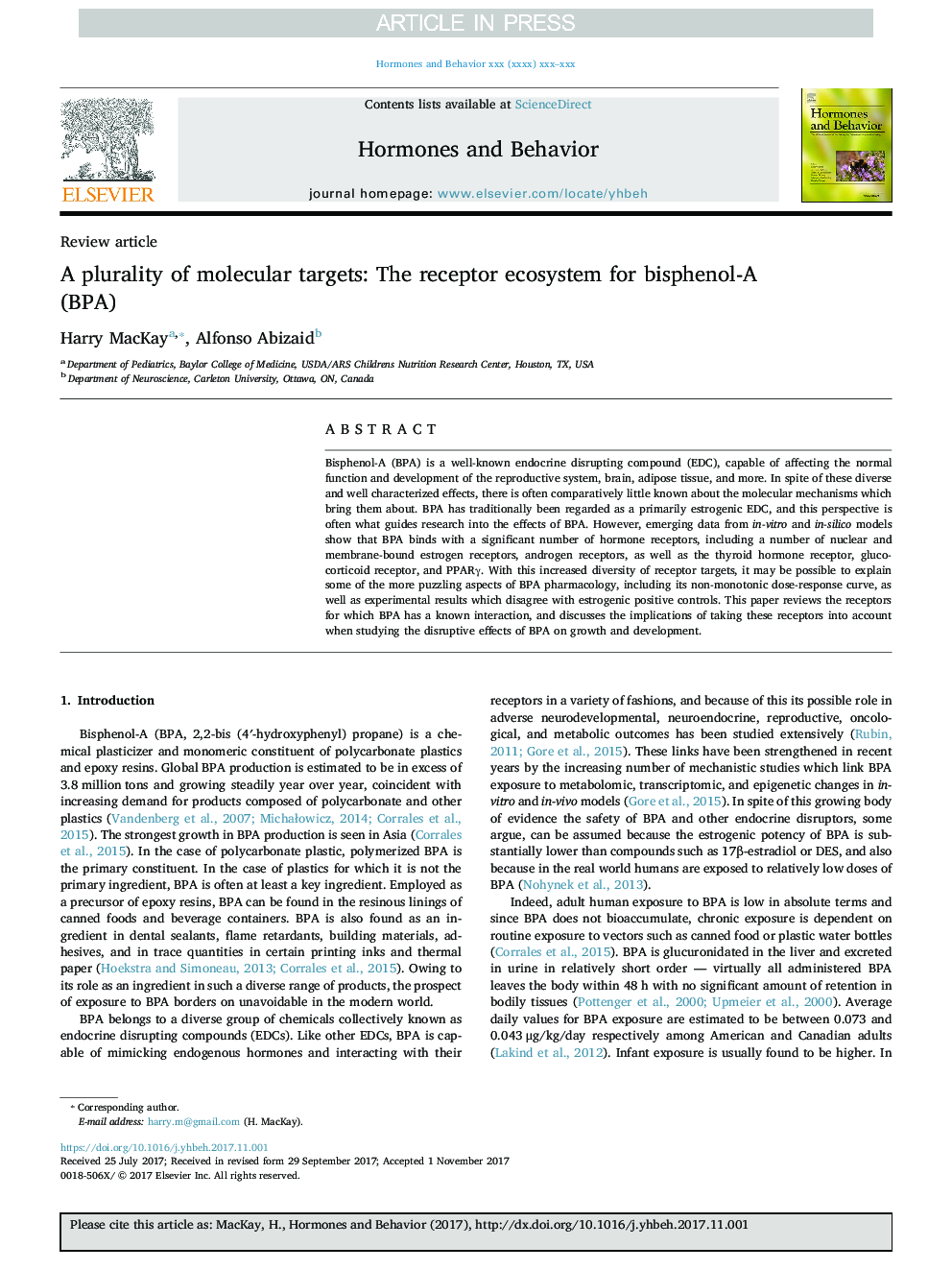| Article ID | Journal | Published Year | Pages | File Type |
|---|---|---|---|---|
| 6793830 | Hormones and Behavior | 2018 | 9 Pages |
Abstract
Bisphenol-A (BPA) is a well-known endocrine disrupting compound (EDC), capable of affecting the normal function and development of the reproductive system, brain, adipose tissue, and more. In spite of these diverse and well characterized effects, there is often comparatively little known about the molecular mechanisms which bring them about. BPA has traditionally been regarded as a primarily estrogenic EDC, and this perspective is often what guides research into the effects of BPA. However, emerging data from in-vitro and in-silico models show that BPA binds with a significant number of hormone receptors, including a number of nuclear and membrane-bound estrogen receptors, androgen receptors, as well as the thyroid hormone receptor, glucocorticoid receptor, and PPARγ. With this increased diversity of receptor targets, it may be possible to explain some of the more puzzling aspects of BPA pharmacology, including its non-monotonic dose-response curve, as well as experimental results which disagree with estrogenic positive controls. This paper reviews the receptors for which BPA has a known interaction, and discusses the implications of taking these receptors into account when studying the disruptive effects of BPA on growth and development.
Related Topics
Life Sciences
Biochemistry, Genetics and Molecular Biology
Endocrinology
Authors
Harry MacKay, Alfonso Abizaid,
